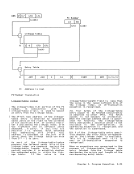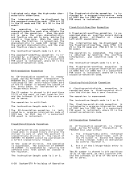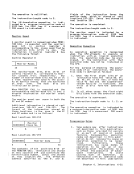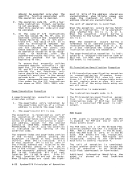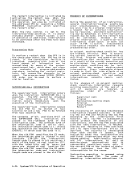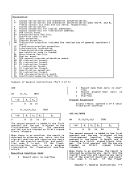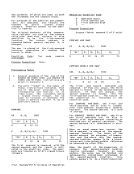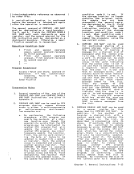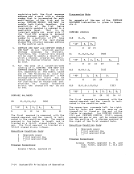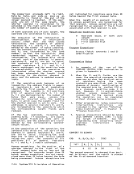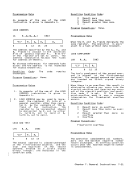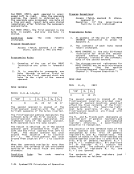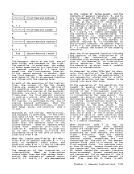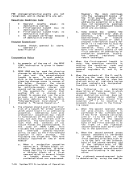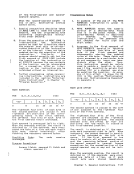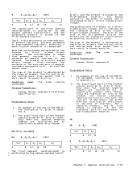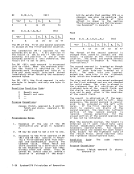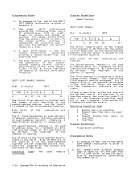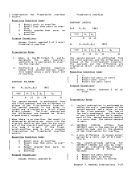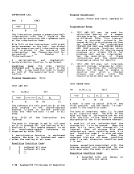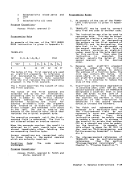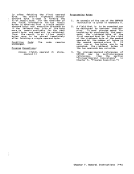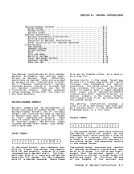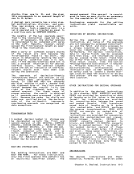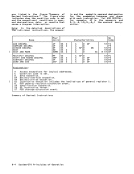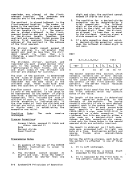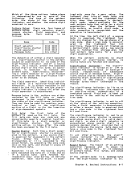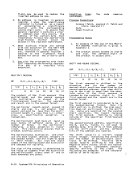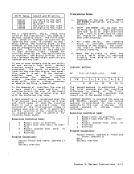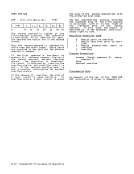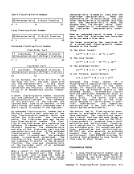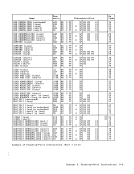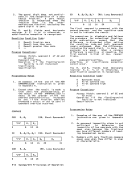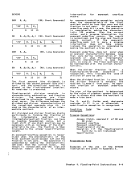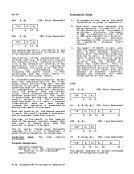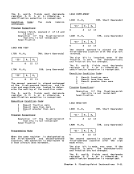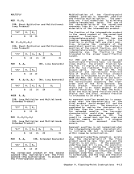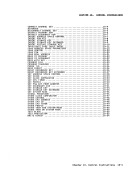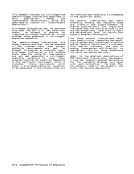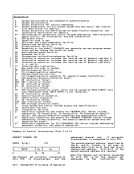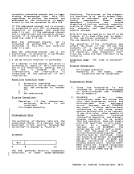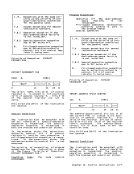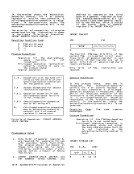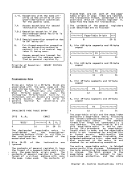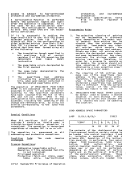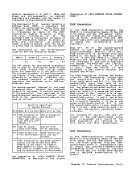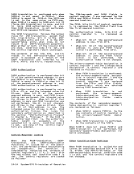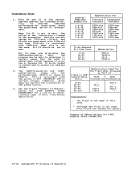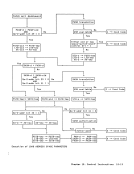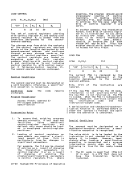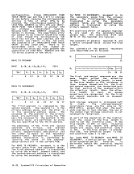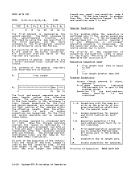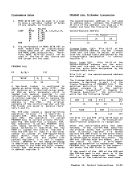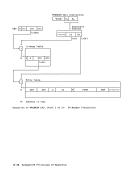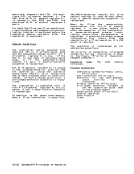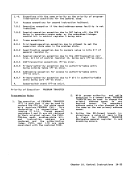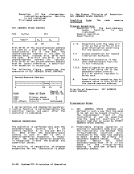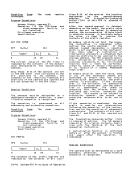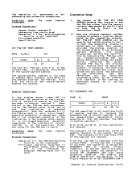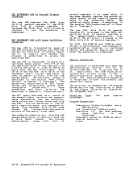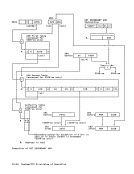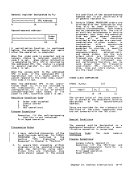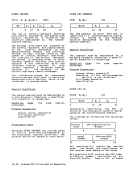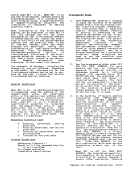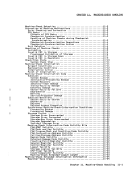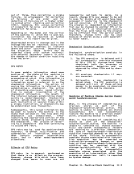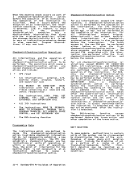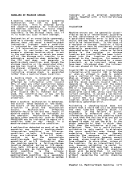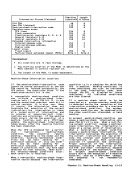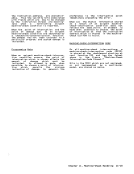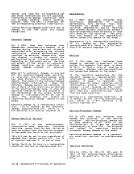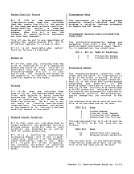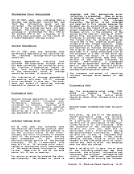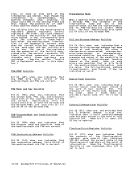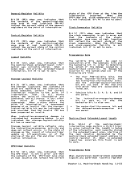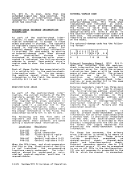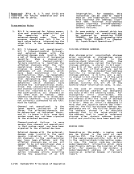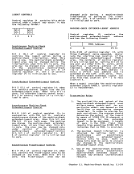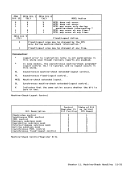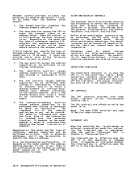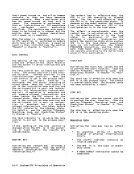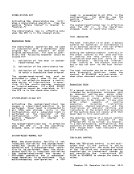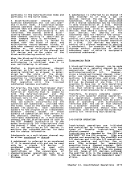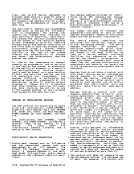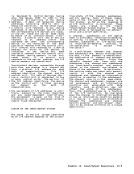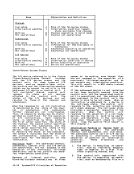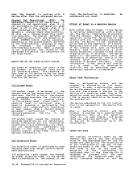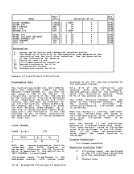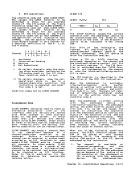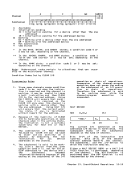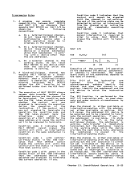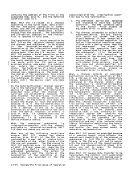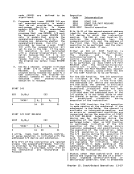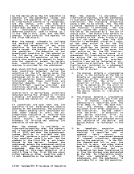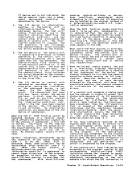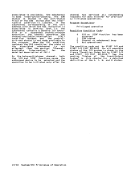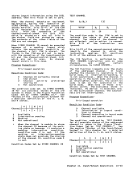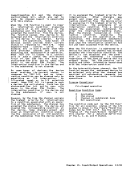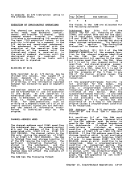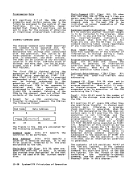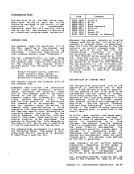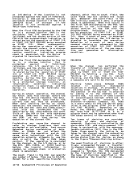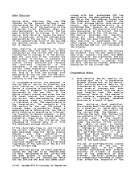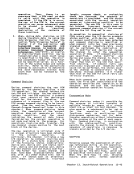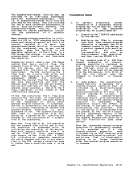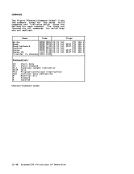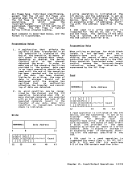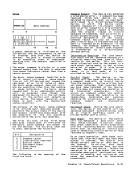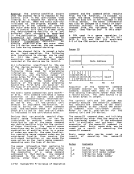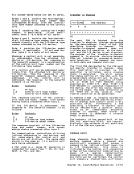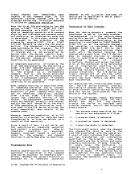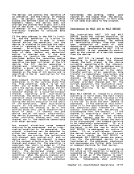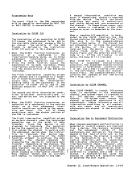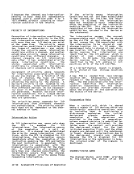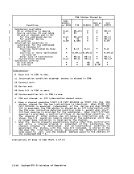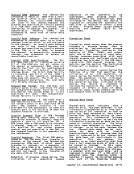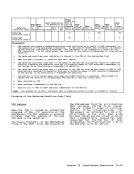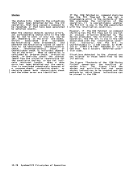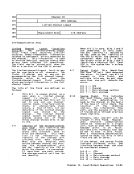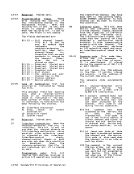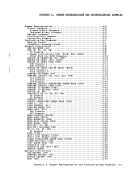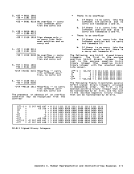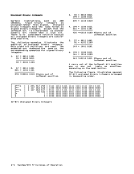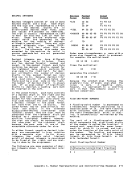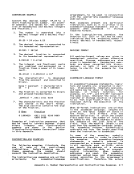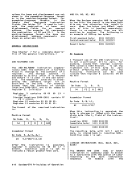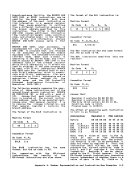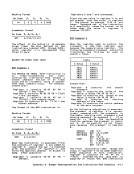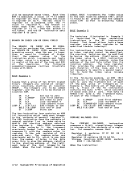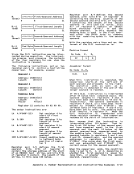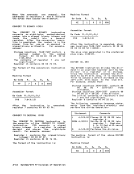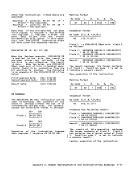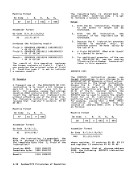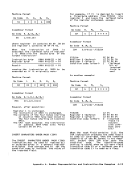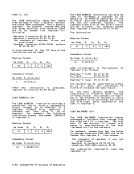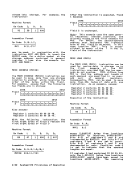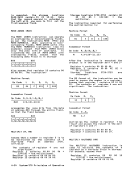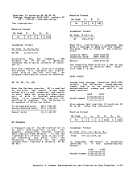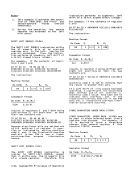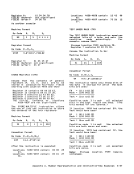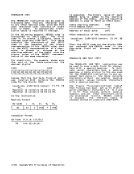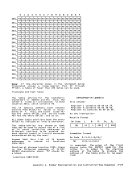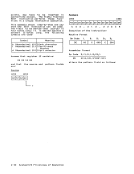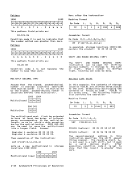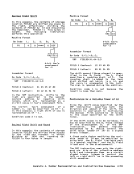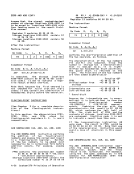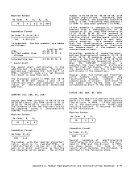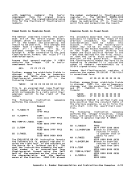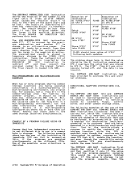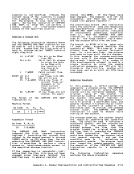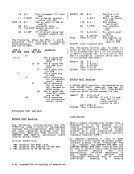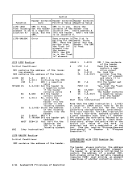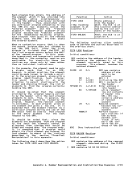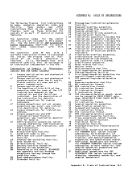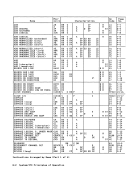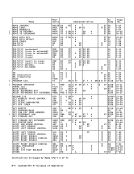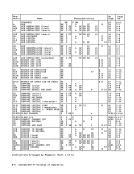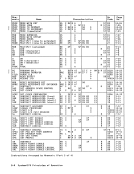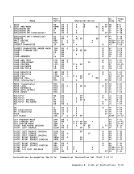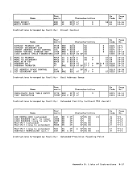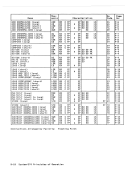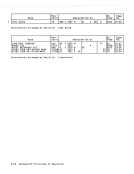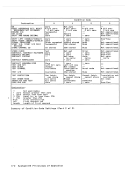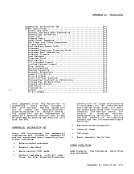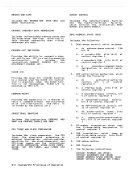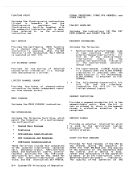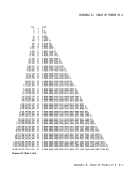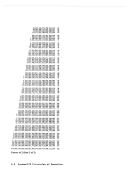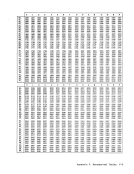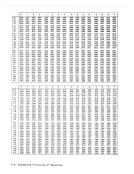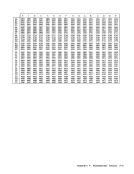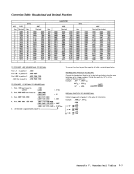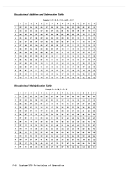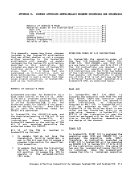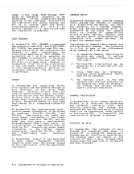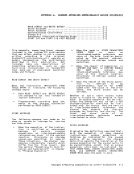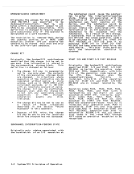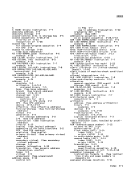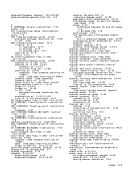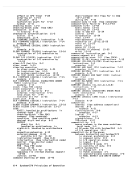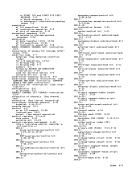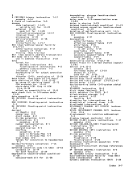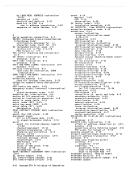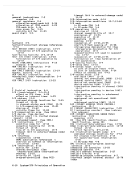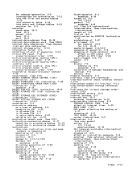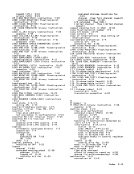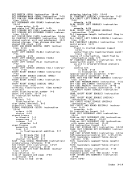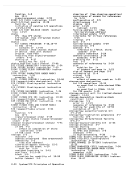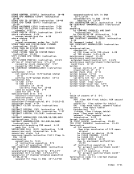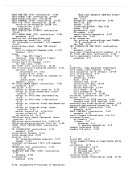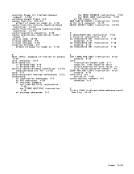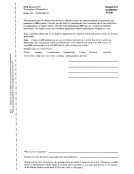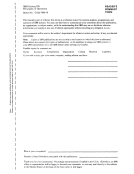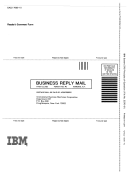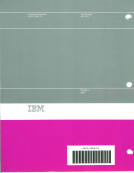Invalid IDAW Address: The channel has
attempted to fetch an IDAW from a stor
age location which is not available to
the channel. An invalid IDAW address
can occur in the channel because the
program has specified an invalid address
in aCCW that specifies indirect data
addressing or because the channel, on
sequentially fetching IDAWs, has
attempted to fetch from an unavailable
location.
Invalid Data Address: The channel has
attempted to transferdata- to or from a
storage location which is not available
to the channel. An invalid data address
can occur in the channel because the
program has specified an invalid address
in theCCW, or in an IDAW, or because
the channel, on sequentially accessing
storage, has attempted to access an
unavailable location.
Invalid IDAW Specification: The 24-
bit-IDAW facility is installed and bits0-7 of the IDAW are not all zeros, or
the second or subsequent IDAW does not
specify the first or, for read-backward
operations, the last byte of a 2K-byte
storage block. The 31-bit IDAW facility
is installed and bit0 of the IDAW is
not zero, or the second or subsequent
IDAW does not specify the first or, for
read-backward operations, the last byte
of a 2K-byte storage block.
InvalidCAW Format: The CAW does not
containzeros in bit positions 4-7 when
the suspend-and-resume facility is not
provided by the system model orin bit
positions 5-7 when the suspend-and
resume facility is provided.
InvalidCCW Format: A CCW other than a CCW specifying transfer in channel does
not contain zeros in bit positions 38-39
when the suspend function is not
provided for the subchannel or does not
contain zero in bit position 39 when the
suspend function is provided.
Invalid Suspend Flag: ACCW fetched
during data chaining, other than aCCW specifying transfer in channel, does not
contain a zeroin bit position 38. A CCW other than a CCW specifying transfer
in channel does not contain a zero in
bit position38 and either suspend
control was not specified in theCAW, or
the suspend function is not operable for
the subchannel.
InvalidSequence: The first CCW desig
nated by theCAW specifies transfer in
channel, or the channel has fetched two
successiveCCWs both of which specify
transfer in channel, or a sequence of
256 or moreCCWs with command chaining
specifiedwere executed by the channel
and did not result in the transfer of
any data with anI/O device.
Detection of program check during the
initiation of an operation causes
execution of the operation to be
suppressed. When program check is
detected after the operation has been
initiated at the device, the deviceis signaled to conclude the operation the
next time it requests or offers a byte
of data. Program check causes command
chaining and command retry to be
suppressed.
ProtectionCheck Protection check occurs when the channel
attempts a storage access that is
prohibited by key-controlled storage
protection. Protection applies to the
fetching ofCCWs, IDAWs, and output
data, and to the storing of input data.
Storage accesses associated with each
channel program are performed using the
subchannel key provided inthe CAW asso
ciated with that channel program. For
details, see the section "Key-Controlled
Protection" inChapter 3, "Storage."
When protection check occurs duringthe fetching of a CCW that specifies the initiation of an I/O operation, or
occurs during the fetching of the first
IDAW, the operationis not initiated. When protection check is detected after
the operation has been initiated at the
device, the device is signaled to
conclude the operation the next timeit requests or offers a byte of data.
Protection check causes command chaining
and command retry to be suppressed.Channel-Data Check Channel-data check indicates that a
machine error has been detectedin the
information transferred to or from stor
age during anI/O operation, or that an
error has been detected on data trans
ferred fromthe device during an input
operation. This information includes
the data read or written, as well asthe information transferred as data during a sense or control operation. The error
may have been detected in the channel,in storage, or on the path between the
two.Channel-data check may be indi
cated for data with an invalid
checking-block code in storage when the
data is referred to by the channel butthe data does not participate in the
operation. This can happen, for
example, on an input operation when less
than a full checking block of data is to
be placed in storage. In this case,
called a partial store, the entire
checking block is fetched from storage,
is updated with the input data, and is
replaced in storage. Ifa CBC error is
detected when the checking blockis fetched, it cannot be corrected because
only part of the checking- block is cnapter 13. Input/Output Operations 13-71
attempted to fetch an IDAW from a stor
age location which is not available to
the channel. An invalid IDAW address
can occur in the channel because the
program has specified an invalid address
in a
addressing or because the channel, on
sequentially fetching IDAWs, has
attempted to fetch from an unavailable
location.
Invalid Data Address: The channel has
attempted to transfer
storage location which is not available
to the channel. An invalid data address
can occur in the channel because the
program has specified an invalid address
in the
the channel, on sequentially accessing
storage, has attempted to access an
unavailable location.
Invalid IDAW Specification: The 24-
bit-IDAW facility is installed and bits
the second or subsequent IDAW does not
specify the first or, for read-backward
operations, the last byte of a 2K-byte
storage block. The 31-bit IDAW facility
is installed and bit
not zero, or the second or subsequent
IDAW does not specify the first or, for
read-backward operations, the last byte
of a 2K-byte storage block.
Invalid
contain
the suspend-and-resume facility is not
provided by the system model or
positions 5-7 when the suspend-and
resume facility is provided.
Invalid
not contain zeros in bit positions 38-39
when the suspend function is not
provided for the subchannel or does not
contain zero in bit position 39 when the
suspend function is provided.
Invalid Suspend Flag: A
during data chaining, other than a
contain a zero
in channel does not contain a zero in
bit position
control was not specified in the
the suspend function is not operable for
the subchannel.
Invalid
nated by the
channel, or the channel has fetched two
successive
transfer in channel, or a sequence of
256 or more
specified
and did not result in the transfer of
any data with an
Detection of program check during the
initiation of an operation causes
execution of the operation to be
suppressed. When program check is
detected after the operation has been
initiated at the device, the device
next time it requests or offers a byte
of data. Program check causes command
chaining and command retry to be
suppressed.
Protection
attempts a storage access that is
prohibited by key-controlled storage
protection. Protection applies to the
fetching of
data, and to the storing of input data.
Storage accesses associated with each
channel program are performed using the
subchannel key provided in
ciated with that channel program. For
details, see the section "Key-Controlled
Protection" in
When protection check occurs during
occurs during the fetching of the first
IDAW, the operation
the operation has been initiated at the
device, the device is signaled to
conclude the operation the next time
Protection check causes command chaining
and command retry to be suppressed.
machine error has been detected
information transferred to or from stor
age during an
error has been detected on data trans
ferred from
operation. This information includes
the data read or written, as well as
may have been detected in the channel,
two.
cated for data with an invalid
checking-block code in storage when the
data is referred to by the channel but
operation. This can happen, for
example, on an input operation when less
than a full checking block of data is to
be placed in storage. In this case,
called a partial store, the entire
checking block is fetched from storage,
is updated with the input data, and is
replaced in storage. If
detected when the checking block
only part of the checking













































































































































